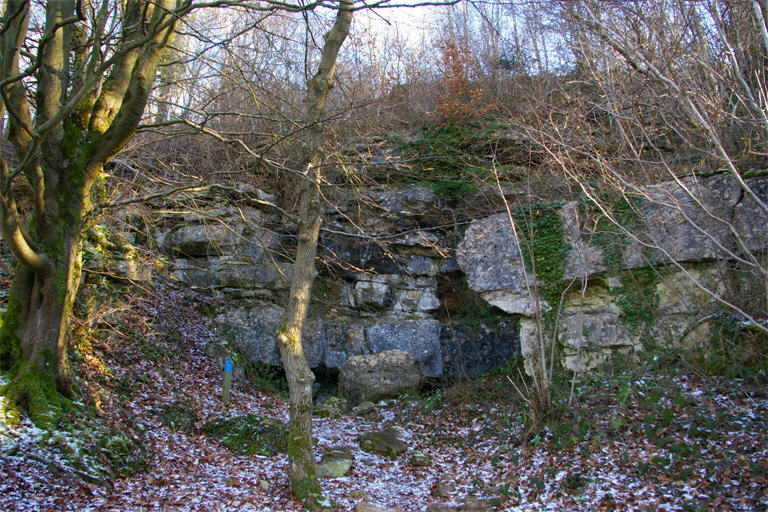
 |
Site 5 - Bath Oolite/Upper Rags/Forest Marble
|
The rock face is approached by a path through an area of trees GPS to be added
Shortly before reaching the face a large block will be seen on the right hand side. You should be able to recognise the two rocks forming this block as you saw them at Site 1. The upper face of the block is the top surface of the Roof Bed and this should be examined carefully but not hammered or walked on. The fossils covering the surface in places are the shells of small oysters and show that the rock must have been consolidated before the next bed was deposited as oysters need a firm surface to which to attach. The surface also shows evidence of having been bored into by organisms, probably bivalves. The main rock face shows rocks that you have seen before. At the base was the Bath Oolite but now it is the bricked-up entrance to an old mine. It is overlain by the Roof Bed which is here thicker than that seen at Site 1. Above the Roof Bed is a white oolite looking much like the Bath Oolite below it and indicates a return to the same sort of environment that existed before the Roof Bed was deposited. If the oolite above the roof bed is examined carefully, and this can be done at a small rock face to the left of the main face, it will be found to be more shelly than the Bath Oolite and also have the remains of small vertical burrows in it.
This stone and the Bath Oolite are examples of freestones, so called because they are free from fossils and flaws and also can be cut freely in any direction without fear of a split in an unwanted direction. They are soft enough to be cut with a hand saw but harden on exposure to the atmosphere. Above the oolite are the top beds of the Upper Rags. These can be examined more easily at site 7. |

Site 5 Large block can be seen on the right
|